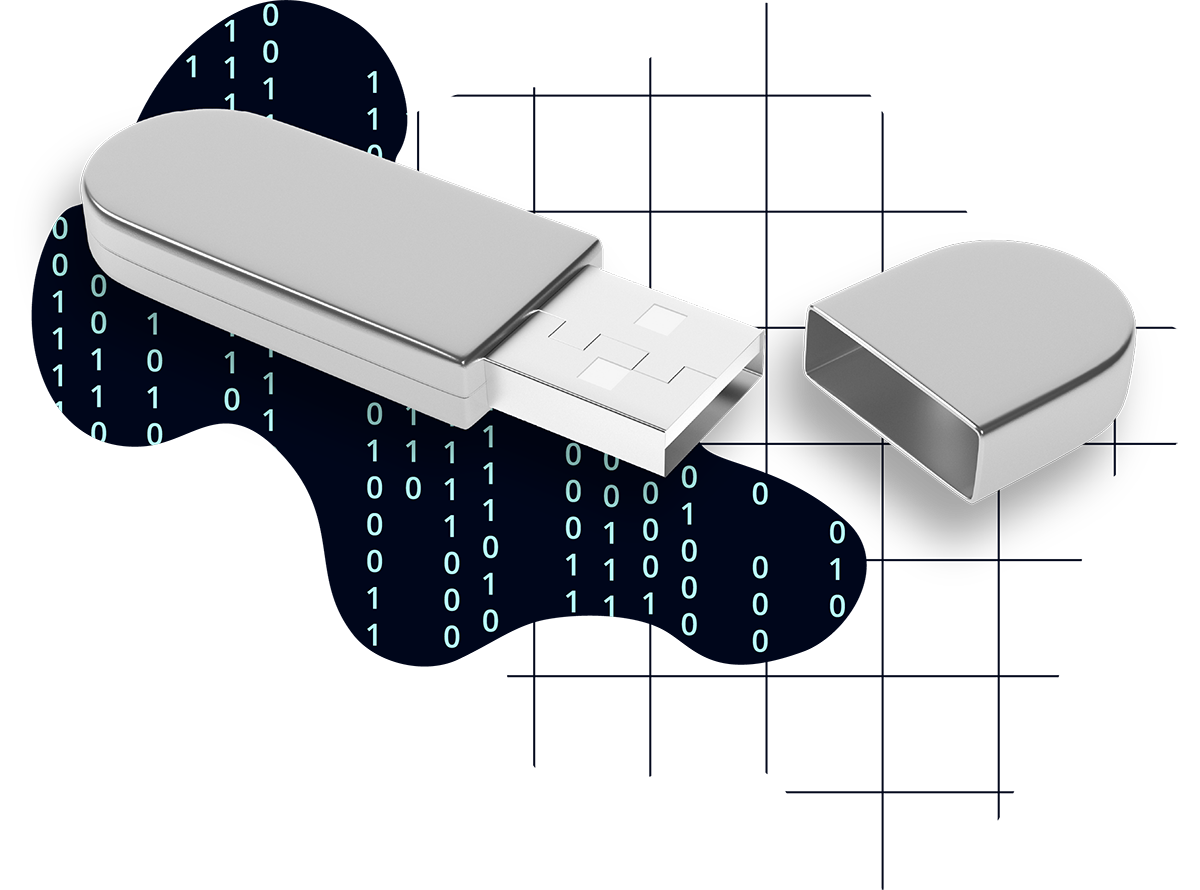In Argentina, your money is worth double if you skip the airport currency exchange and instead go to one of the many black market exchanges hidden throughout Buenos Aires.
These illegal exchanges are called “cuevas” (the word for “cave” in Spanish), and they are a crucial part of Argentina’s financial infrastructure. Argentinians are constantly exchanging their pesos (ARS) for other currencies, usually US dollars (USD), and back again because they simply cannot rely on their country’s fiat currency.
- The value of ARS is infamously unstable. The country’s money supply has persistently high inflation, punctuated by bouts of hyperinflation. Argentina has seen an average of 100% annual inflation for the last century. In 1989, inflation reached 3,000%!
- The government has also imposed strict capital controls that make moving money in and out of the country challenging. It is impossible to take USD out of Argentinian ATMs, even as an American with a US bank account.
- Argentinians who vacation in Costa Rica or pay their child’s college tuition in Miami have to pay exorbitant taxes to move money out of the country, or sometimes cannot move the money at all. As a result, these sorts of transactions require an illegal workaround.
- ARS has a pegged exchange rate, meaning its value is not set by market demand like USD but rather is set by government mandate — and the pegged exchange rate almost always overstates the value of the peso. As a result, there is a thriving black market that sets a floating, informal exchange rate called Dólar Blue. These two rates are often dramatically different: as of early 2022, the official ARS to USD exchange rate is 110 to 1, while the informal is 215 to 1. If you bring $1 USD to a legal exchange, you get just 110 ARS pesos, whereas you’ll get 215 ARS pesos in return for that same dollar at a cueva.
As a result of these challenges, there is a lot of demand to move money around without the government’s visibility.
Illegal money movement is so common that it’s discussed as openly and casually as people in the US might discuss what bank they use.
This backdrop makes Argentina a poster child for cryptocurrencies. The argument from crypto proponents is that Argentinians have personally experienced the problems of centralized fiat currency for generations, so they’re especially receptive to the case for decentralized currencies that their government cannot meddle with.
Crypto enthusiasts are correct in many ways. I know an Argentinian grandma who barely uses a computer, yet as soon as she heard about Bitcoin from her grandson in 2016, she instantly said “Money the government can’t touch? Help me buy it right now,” and she’s been holding it ever since. (An understandable reaction when you’ve seen your country go through 5 different currencies in your lifetime.)
I’ve also seen firsthand how crypto has transformed the way the black market operates in Argentina. When I first started visiting the country on a yearly basis in 2018, cuevas generally only advertised exchange rates between ARS and other fiat currencies, such as USD and the euro (EUR). Now, they’ve added the exchange rates between BTC, ETH, TRON, and other cryptocurrencies to the menu because more and more of their customers are demanding it.
However, the specific ways crypto is used in Argentina are quite different from how many people who are building out the crypto ecosystem originally imagined it.
For example, crypto enthusiasts often imagine a world where individuals control their own wallets directly — storing the cryptographic code on their local computers or phones, not using a third party, like MetaMask.
But the reality on the ground is quite different: Argentinian crypto users use intermediaries and centralized apps to access crypto. This is especially striking given the reasons Argentinians use crypto in the first place, which you’d expect to make them especially receptive to the value proposition of decentralization.
The peso lost almost all its value in a generation
If you’d saved $100,000 USD worth of pesos in 1995, they would be worth about $310 USD today. In the mid 1990s, 1 ARS = $1 USD; as of July 2022, the value is 322 ARS = $1 USD. Anyone who held onto pesos in that time would have had their life savings obliterated.

Argentinians have learned that it’s much better to save in other countries’ currencies, and the favorite for decades has been USD, particularly in the form of $100 bills. In 1995, a paper from the Federal Reserve estimated that “Argentina has received as much as $40 billion in net shipments of U.S. currency, or well over $1,000 per capita,” and the number has likely only increased since then.
Argentinians have also learned to not trust banks, even with accounts denominated in other currencies. In 2001-2002, the government enacted something called “el corralito”, shutting Argentinians’ access to their bank accounts for almost a year.
When they could finally extract money again, they found that (a) their USD deposits had to be exchanged for pesos and (b) pesos had lost 2/3 of their value. The lesson the Argentines learned was that they couldn’t trust banks or any other government-regulated financial services, because at any moment the government could just stop them from accessing their money.
I’ve seen more $100 dollar bills in Argentina than I’ve seen in my entire lifetime in the US. $100 bills make up 80% of all US currency by value and 34% of all bills in circulation, according to economist Edgar Feige, and there are more “Benjamins” floating around than all of the $5 and $10 notes combined.
This is unintuitive to most Americans – $100 bills are a rare sighting, at least for me. This is not unintuitive to Argentinians, whose family probably has saved stacks of $100 bills under mattresses for generations.
Bricks — actual bricks, not stacks of cash — are another common savings mechanism, especially for working-class Argentinians. The value of bricks is fairly stable, and they’re useful to a family building out their house. Argentina doesn’t have a mortgage industry, and thus buying a pallet of bricks each time you get a paycheck is an effective way to pay for your home in installments.
(Bricks aren’t fully monetized, in that I don’t think people buy bricks and then sell them later, so people only use this method of saving when they actually have something they want to use the bricks for.)
As you can imagine, there are challenges that come with saving in wads of $100 bills or stacks of bricks. For one thing, they take up a lot of space. Worse, your life savings are also at constant risk of theft, damage, and fire. If something does happen, the bills are not insured or protected by any institution; they’re just gone.
As a result, Argentinians are interested in alternatives for storing their money, especially those that are both out of the clutches of their government and safer than storing piles of cash at home.
Crypto is starting to make it easier for Argentinians to save
In the US, critics often make fun of crypto enthusiasts by pointing out that if you store your crypto on a hardware wallet and then lose the disk or the password, you’re hosed. They scoff at crypto’s volatility and difficult user experience. They rightfully point out that most Americans won’t make this tradeoff when institutions like banks can store the money for them securely, and without risk of losing the money.
The tradeoffs are very different in Argentina: when your alternative is storing boxes of money in the attic or under your mattress, an unobtrusive hardware wallet sounds like a pretty good idea.
Instead of carrying around suitcases of cash when you want to buy a house, you can just carry a USB stick with your private key to complete the transaction.
When reflecting on crypto’s volatility, a common sentiment is “I would rather have a digital asset whose price goes up and down than a currency whose only real trend is down.”
When most people think of crypto, they tend to think of bitcoin (BTC) and Ethereum (ETH). However, these are not ideal savings instruments because they are highly volatile and the transaction fees remain expensive.
As a result, BTC and ETH are not so common for daily use in Argentina. Stablecoins such as USD-T, USD-C, and TRON are a more popular solution because they are pegged to a more stable currency (usually, USD).
Notably, the stablecoins popular for savings are also much more centralized. The Tether Foundation (which issues USD-T) has blocked transactions, and so has the Centre consortium (which issues USD-C). While TRON is technically not centralized, its cofounder has said that its architecture is not as decentralized as other blockchains’.
They are attractive to Argentinians because they are not under the control of the government, not because they are decentralized and truly permissionless.
Remote work is a way to decouple from the local economy
At the same time that crypto is changing how people use money, remote work is becoming increasingly common for Argentinians, because it allows them to earn in other currencies besides the peso.
Remote workers sometimes set up bank accounts abroad so they don’t have to bring them back into Argentina (and thus under the watchful eye of the government). They hold funds in places like Payoneer, PayPal, Mercury, or Estonian and US bank accounts, and withdraw just enough in Argentina to pay for the day-to-day expenses. Sometimes these are set up legally, and sometimes they are not.
USD and EUR have historically been the most popular currencies for remote work, in part because most of the remote jobs come from the US or Europe, and in part because those currencies are quite stable and accepted worldwide.
However, overseas accounts remain out of reach for many people — setting up bank accounts abroad generally requires traveling there, which is expensive and time-consuming.
Crypto is starting to help a small but growing number of remote workers in Argentina. Crypto allows them to move their money around from within Argentina, rather than having to use an intermediary in another country. This can save them trips to Estonia, the US, or wherever they would’ve had to open their bank accounts.
If done covertly, it can also allow them to avoid Argentinian taxes (though this also requires coordination with their employer, which many employers are not willing to do, because it increases their liability).
Argentinians who use crypto are increasingly untethered from the local Argentinian economy and increasingly plugged into the global cloud economy. Crypto is providing new solutions to problems that Argentina has faced for generations, and many Argentinians are excited about its potential to make it easier and safer to make, use, and store money.
Crypto is more practical than cash for many transactions
Distrust of the formal financial system is part of everyday life in Argentina. On every payday, the first stop many Argentinians make is to the cuevas (the illegal money exchanges), where they can swap their ARS for USD.
This solves one problem — they’re no longer holding onto the hot potato that is the Argentine peso — but creates many other problems.
For one, stacks of bills are difficult to transport. This increases the energy cost necessary for any transaction. For example, an American friend of mine considered buying an apartment in Buenos Aires many years ago, but he balked when he realized he’d have to stuff a suitcase with $100 bills and fly them to Argentina in order to meet the seller’s expectations. He decided it was not worth the hassle.
It’s also dangerous to transport physical bills. Criminals know that people often carry cash, which makes muggings more attractive in Argentina compared to countries where most transactions are done on credit cards.
The cuevas themselves have serious security problems, too — they have to transport sometimes millions of dollars in USD to and from their offices every day, so they end up having to move the location of their offices often so that other criminals don’t catch wind of where their couriers will be going in and out of their operation.
Crypto is starting to help Argentinians deal with these problems. When making a big purchase, like a house, you can just carry a USB stick with your private key to complete the transaction, instead of having to transport suitcases full of cash. Like with cash, the government doesn’t have to be the wiser that the crypto transaction occurred, enabling buyers and sellers to avoid capital controls and taxes.

From talking to locals, it sounds like this is still rare, in part because both sides of the transaction have to agree to doing it in crypto. It also requires a high level of technical comfort, user experience is poor, and volatility is high.
However, Argentinians have a lot of experience finding gaps in complex systems and then taking advantage of them fully, so I expect adoption to grow rapidly as word spreads that this is possible.
Another problem with cash is it may require a trusted third party that both the buyer and seller are comfortable with to hold the funds in escrow. Because many of these transactions are under the table, participants have little recourse if things go wrong, so it’s crucial that the third party is trustworthy.
Smart contracts, programmed on the blockchain, have the potential to take out this third party and instead allow the buyer and seller to use a neutral contract that holds funds in escrow until both sides have agreed the transaction is complete. I’ve yet to hear of an Argentinian who’s done this, but it’s a big opportunity to solve a major problem in the ecosystem.
Crypto has also become central to the cuevas’ business
The cuevas I spoke to said that crypto has made it much safer and cheaper to transfer large sums of money on the backend.
One key use case is to evade the government’s capital controls so that they can bring money in and out of Argentina. The government has made it impossible to extract USD from ATMs (yes, even if you’re an American with an American bank account denominated in USD), so historically a major way that USD bills entered the country was through the crossing the physical border between Argentina and Uruguay.
Uruguay is Argentina’s much more economically free neighbor, and it doesn’t have restrictions on USD, so there has been a large flow of dollars across the river between the two countries.
However, this was expensive and risky, since the cuevas had to smuggle large quantities of physical cash across the wide Rio de la Plata river. Crypto, especially USD-C and USD-T, has made it much easier to move that money around: now, the cuevas can move dollars in and out of the country from their highrise offices in Buenos Aires, rather than having to get onto a boat.
Another use is to pay someone in USD (usually in a stablecoin) in exchange for physical pesos. This is especially true for the “wholesalers” called “cuevas mayoristas,” who are responsible for delivering large amounts of cash to smaller retail cuevas.
Historically, these wholesalers have had motorcycle couriers who biked all around the city delivering stacks of pesos or dollars to smaller cuevas around town. These couriers wear custom-made vests tucked under their coats that are specially designed to carry the maximum number of bills without looking visibly bulky, to avoid the attention of law enforcement and criminals who might realize that a juicy payday is tucked into every nook and cranny around their chest and legs.
Crypto has helped reduce this risk by giving the cuevas a way to move USD around without having to physically transport it on humans, who are prone to getting robbed. These couriers are still an important part of the business because Argentina is mostly a cash economy and thus people still need their physical pesos, but crypto has reduced the risk of loss dramatically by reducing the number of dollars they need to carry alongside the pesos.
Most Argentinians interact with crypto through intermediaries
From talking to several cuevas and to my Argentinian friends, it sounds like it’s still uncommon for a typical person to use crypto to move money around directly. More likely, they go to a cueva and the cueva does the transaction for them, and the person doesn’t realize that the cueva was using crypto behind the scenes to do it.
I find this fascinating because one of the big assumptions of crypto proponents was that when crypto is adopted widely, everyone will control their own wallets and addresses. But in Argentina right now, it’s more common for consumers to interact with a centralized business that itself depends on the decentralization of crypto to exist, rather than for the consumers to interact with the blockchain directly.
Another way to look at it is that the cuevas’ use of crypto on the backend enables people to more easily access dollars and other assets, even if they aren’t interacting with crypto directly themselves.
In practice, this may end up having similar effects as the world where every person has their own hardware wallet because if the centralized cueva they depend on misbehaves or goes under, the decentralization of the blockchain that the cueva uses allows the end customer to just move over to another centralized service that is layered on top of the blockchain.
But I could also see it working similarly to how we access the internet today. Technically, the internet is a decentralized service that you can connect to without going through an intermediary like Facebook or Google, but in practice almost everyone goes through those giants to access the web, and they layer lots of other centralized services on top that make it very difficult to eject from their ecosystem.
Even cuevas have picked convenience over decentralization
It’s also fascinating to see the tools people and cuevas use to interact with crypto. Every cueva manager I met said that they and their customers prefer TRON over BTC or ETH or other more well-known cryptocurrencies, primarily because the transaction fees are so much lower.
They said their customers don’t send them crypto that often, but when they do it’s usually TRON from a Binance wallet. They were surprised when my friend tried to send them ETH directly from his wallet.
The fact that they use TRON and Binance was notable, because both of these are centralized services without the best reputations. TRON’s design is technically decentralized, but its cofounder has described it as “centralized” because it depends on such a small number of super representatives, who are responsible for keeping track of the transaction history in the TRON ecosystem to validate transactions.
Binance, a crypto exchange, is completely centralized, meaning that any balances that anyone has with Binance are stored on a central database that Binance controls, rather than on a permissionless blockchain.
This means that Binance can freeze accounts if it chooses to, which sounds an awful lot like the situation the Argentine banking system was in during the 2001 “corralito,” which left millions of Argentinians without access to their savings for nearly a year.
This ambivalence for decentralized cryptocurrencies isn’t limited to consumers. Of all the cuevas I spoke with, only one actually manages their own keys. Every other cueva I know uses Binance as their primary wallet for crypto, both for day-to-day transfers and for holding their reserves. Many of them are holding hundreds of thousands or even millions of dollars in these reserves, which could easily get shut down at any time since what they’re doing is explicitly illegal.
This is striking because it doesn’t match up with the story that many crypto maximalists push about decentralization. Enthusiasts talk all about how important decentralization is, and given their unfortunate financial history, Argentinians more than most should appreciate those benefits.
And yet, there they are, holding their reserves in a centralized app that could get shut down tomorrow, theoretically just as easily as the banks were during the 2001 corralito.
The way I explain this to myself, it seems that the key characteristic that draws Argentinians to these relatively centralized cryptocurrencies is that the government doesn’t control them, rather than being completely decentralized in a way that no one controls them.

To me, this is evidence that they are not bought into the philosophy behind crypto, but rather the utility of crypto. And insofar that the utility and philosophy are discordant, the more you’ll find that the theories of crypto enthusiasts don’t match reality.
The revealed preference of these cuevas is that they care more about convenience than absolute decentralization.
What makes this so odd is that a lower-risk alternative is fairly straightforward and only slightly more expensive — instead of using TRON through Binance, they could use TRON directly, which would only cost them $0.50 USD per transaction.
This might not make sense for individuals moving small amounts of money around, but the cuevas are often storing hundreds of thousands or millions of dollars in reserves in Binance, and so fifty cents on top of transactions of that scale is virtually nothing. It seems like a worthwhile insurance policy to avoid having your money in a centralized institution that is widely distrusted.
Unless I’m missing something, cuevas’ use of Binance seems very short-sighted, especially to store their reserves. My best guess of what’s going on is that they still haven’t learned all of the gotchas involved with crypto, simply because it’s so early.
Additionally, the business owners often depend on younger employees to handle “the crypto stuff.” An Argentinian friend of mine jokes that when you ask a cueva to do a crypto transaction, they call to the back of the office and bring out their “crypto guy,” who’s usually like a 17-year-old kid with a smartphone who knows the basics of the Binance app.
I’m curious to see what’ll happen if Binance implodes — will the cuevas lose big, and if so, what will they learn? I could see it going one of two ways. On one hand, it might spook them away from crypto in general.
On the other hand, it might make them appreciate decentralization more, and teach them that they weren’t taking advantage of enough of crypto’s unique properties.
A pragmatic revolution
Crypto has quietly transformed the way many Argentinians move money and access the global economy. The volume of transactions going through crypto is growing rapidly, and it’s increasingly out of the government’s control.
However, the way that has played out is quite different from what many crypto enthusiasts have imagined.
Decentralization is a worthy goal, but in practice it seems that most Argentinians don’t care that much about it, at least not in the way purists talk about it. They’re more worried about whether the government can get their hands on their money; as long as the answer is “no,” they don’t seem to care much about who else has control over it.
At first, I was surprised to see so many Argentinians using centralized tools to access crypto. But upon reflection, I realized this is exactly what we should expect from human psychology: people implicitly value convenience over preparing for long-tail risks — like the risk of a stablecoin becoming unstable, or an exchange collapsing or being seized by the government — and centralization makes it easier to provide that convenience.
It’s not until something goes terribly wrong that we start to invest in protecting ourselves from the downside. And plenty has already gone wrong in Argentina’s traditional financial system. So if Argentinians aren’t rushing to embrace decentralized currencies, that says a lot about what we should expect from the rest of the world.
Devon Zuegel is a writer, software engineer, and host of the podcast Tools & Craft. Follow her on Medium or Twitter.





